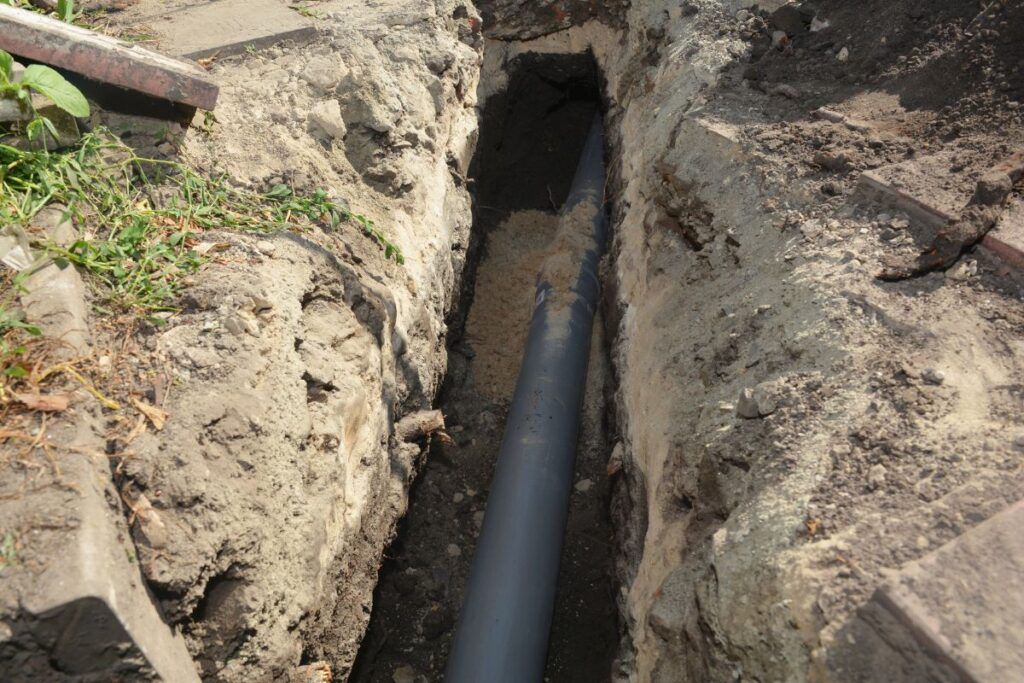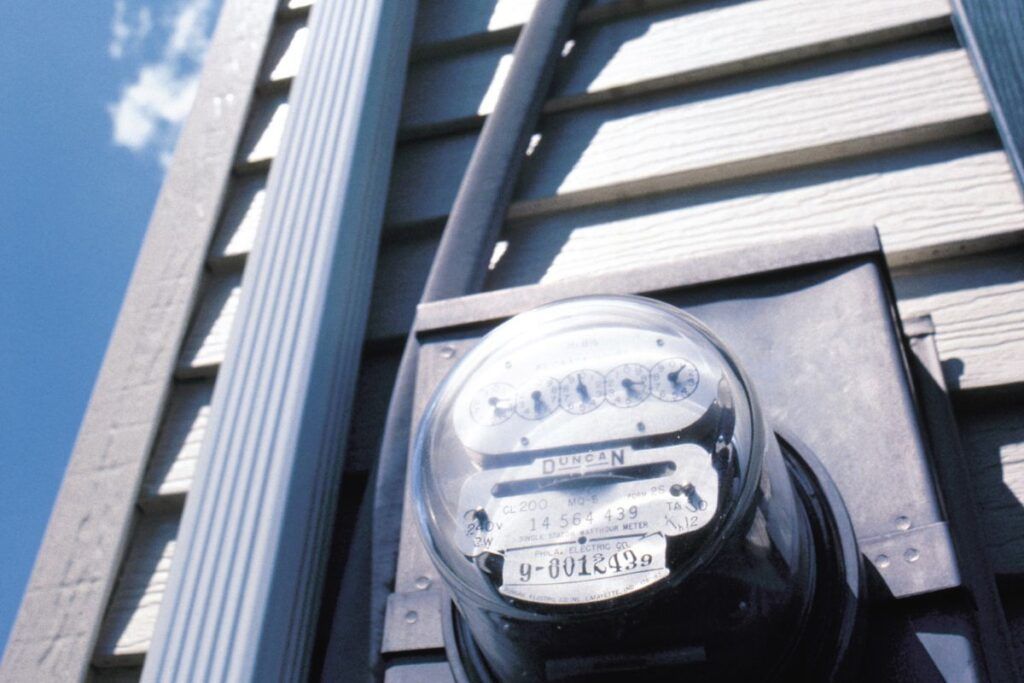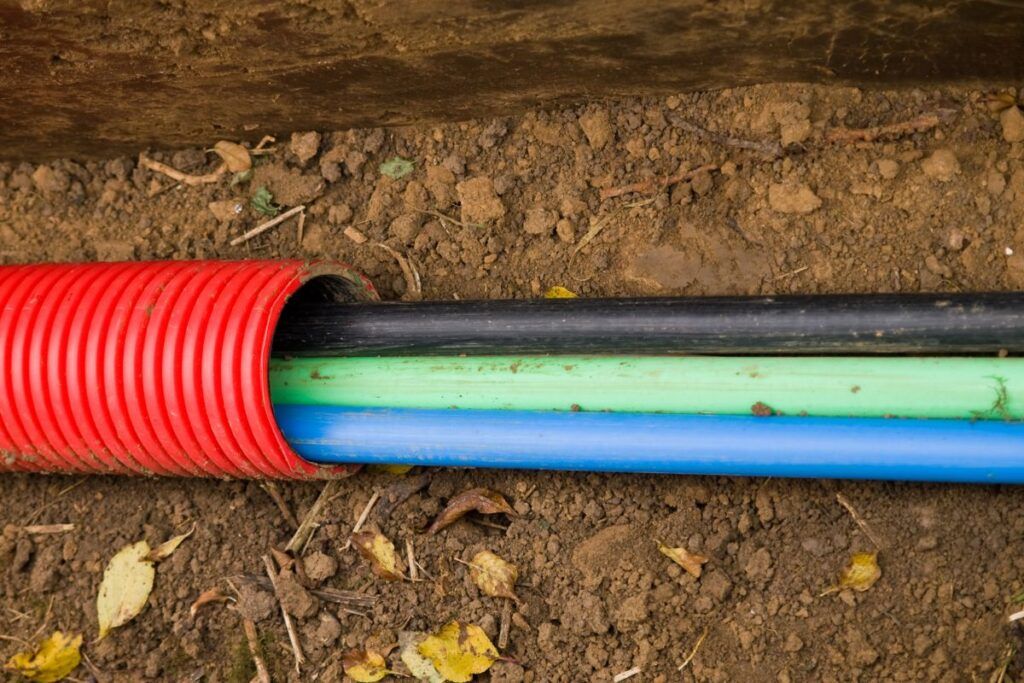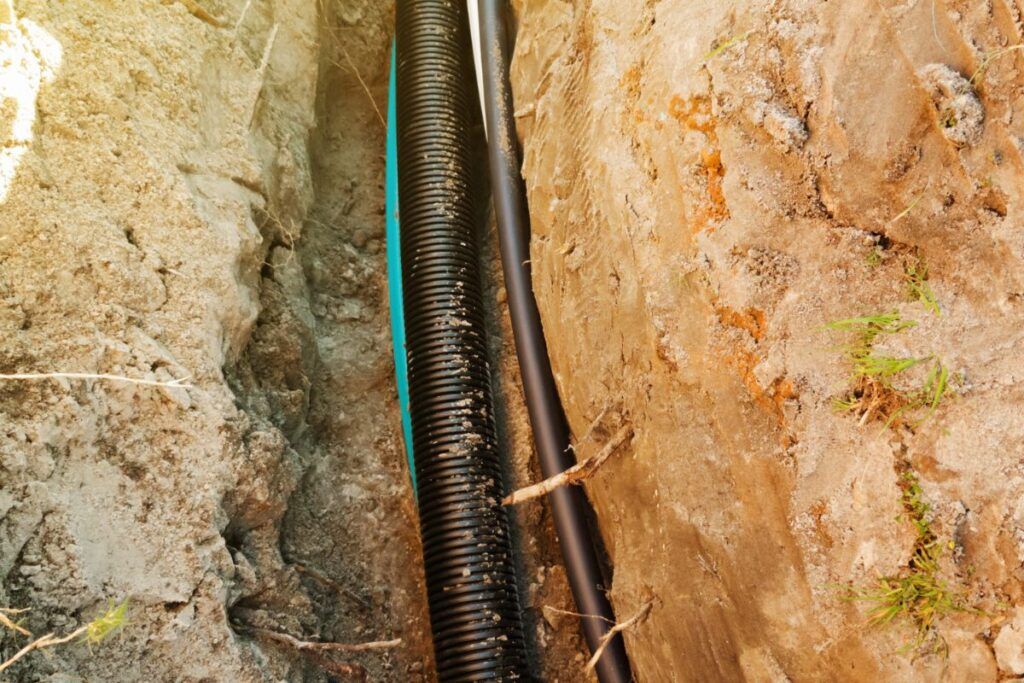Installing an underground power line requires multiple professional electricians. Since it is quite a serious and big job, you will require the best contractors to install the underground electrical lines by following the right codes.
The average cost of underground installing power lines is roughly $12,250 for a distance of 1500 feet in good terrain. However, the cost may vary from around $4,500 to $20,000 depending on the distance between the pole and home, terrain difficulty, and types of cable and conduit used for the same.
The cost includes tools, labor, the time needed for installation, improvements, etc. In this article, we will explore the benefits of underground power lines and the complete cost guide to install the underground lines.

Check out our list of top-handpicked products for all your electrical, appliance, and HVAC system needs to keep your home running smoothly.
This post includes some affiliate links.What are the benefits of using underground power lines?
In electrical grids, different types of power lines are used.
Some lines are overhead power lines used in the utility poles to hold the wires that deliver current to houses.
Some are underground power lines, where the cables are buried and run under the ground.
Having underground power lines has multiple benefits:
- It is safer than overhead power lines. The trees or debris won’t be able to bring down or damage the underground lines.
- Underground lines are more secure as no one can tamper with the lines.
- They are more reliable as they won’t get damaged easily due to harsh weather conditions like rain or thunderstorms.
- Underground power lines lose much less power than those over the head. So they last longer.
Is there any reason for not installing underground power lines?
The only disadvantage of underground power lines is the installation cost.
It is more expensive than the overhead power lines.
However, the cost is quite worth it due to the benefits they give us.
Contact your local authorities or electric utility provider if you are unsure about underground power lines.
They can give you the best suggestions about the right thing for your house.
Besides the cost, below are some other reasons behind not installing the underground power lines:
- Problems with aerial power lines can be identified and fixed easily. It is quite tough for underground lines.
- The overhead lines are cheaper than the underground lines and easy to maintain.
- The underlying topography may increase the installation cost of the underground power lines.
- The target area can be prone to floods, like New South Wales’s coastal areas. So, underground lines can get badly affected.
- The presence of multiple underground facilities needs to be avoided while installing the power lines.
How much does it cost to run power lines underground?

Generally, the average cost for underground power line installation is around $12,250.
But, the cost may vary from project to project, and how long you run the power lines.
For example, if you wish to run underground power lines around 1,500 feet, you will need to pay an average cost of around $12,250.
Sometimes, it may be somewhere between $4,500 and $20,000.
The price to install underground conduits for utilities per foot is around $8, including the labor cost, equipment, trenching, and installation process.
The cost of ½-inch non-metallic PVC conduits will be extra per foot, i.e.$0.25 per foot.
The underground power line installation cost will need multiple electricians and contractors.
Labor costs
The labor costs will vary depending on the location and installation procedure.
The work will need different professionals who can dig trenches, install conduits, and even run cables.
If you call for general contractors, they will bill the payments for them to you and pay the other subcontractors themselves.
Here is a list of payment breakdowns:
- The general contractors will require 10-20% of the total project’s payment.
- The excavator contractors will charge around $400-$1,200.
- The licensed electricians will want ranges between $50 and $100 per hour.
Equipment costs
The materials and equipment needed for the installation will take up 30-40% of the total project cost.
Suppose you have experience in operating high machinery.
In that case, you can rent an excavator for around $300 to $500 daily and dig the trench independently.
Still, it would be better to call for a pro excavator to do the job.
They can do it correctly and faster.
Trenching costs

The trenching costs are mostly around $600-$2,100 on average.
The cost includes the labor and equipment costs too.
Some house owners try saving this money by doing it on their own.
But, it is always best to hire professionals for such work.
You will delay the work if you don’t know what to do.
Besides, the cost may increase if you hit any existing utility lines, dig the wrong area, or clear them poorly.
The trenching for electrical services costs around $4 to $12 per linear foot.
Digging the trench is not expensive, but the cost is sometimes split between the labor and equipment.
For example:
- The labor for digging the trench costs around $5.75 per linear foot.
- The equipment to dig the trench is around $4 per linear foot.
- The permission varies sometimes. An average range would be around $500-$2,000.
The size of the project and its layout will determine the total cost.
It could be nearly $20,000 sometimes.
Depending on where you live, the electricians may charge $50-$100 per hour for trenching.
Besides the underground trenching, there are other home projects where electrical trenching will be needed.
Below are the charges accordingly:
- Installing CCTVs will cost around $1,400.
- For indoor and outdoor outlets, it is around $200.
- For an in-ground swimming pool, the cost will be an average rate of $48,500.
- In-ground hot tubs, the cost will be nearly $15,000 to $20,000, including the trenching, electrical, and plumbing works.
Conduit installation costs
The conduit installation costs range between $4 and $8 per linear foot.
You might have to pay additional costs of around $0.25 per linear foot while upgrading the conduit from standard PVC to non-metallic PVC ½ inches.
So, it will total around $4.25 to $8.25 per linear foot.
Some people claim the cost to be around $20 to $40 per foot.
But, it highly depends on the area of your living.
In highly urbanized areas, the price to run electrical lines underground can be 10 to 14 times more expensive than the overhead power lines.
Trench digging considerations

Installing the power lines underground means digging a trench from the utility pole to your house’s electrical meter.
If you do it yourself, you may delay the process and hit something important under the ground.
Besides, it is essential to follow the electrical codes of your locality.
The trench will require inspection before filling it back to ensure it is dug deep enough for the required number of conduits.
Before digging, there have to be some existing underground utilities.
For that, you can call dig-safe.
They will help you locate the utilities, like the wires, gas, and water lines.
It will help you avoid hitting these locations and prevent you from damaging the lines.
The digging methods may vary depending on the soil type and the amount of power to be run.
For example, sandy grounds are easier to dig for trenching, but clay or rocky soils are harder.
In that case, you need to keep the trench depth shorter.
It is also important to install service entrance ells.
It is a removable cover that allows you to get hold of the wires at the ground level when in need.
Conduits for underground

Before you install the power lines underground, you need to know what type of conduits would be best for underground services.
You can install the underground power lines in a raceway or by direct burial.
Experts suggest using only one cable type, UF or Underground Feeder Cable.
It is good for GFCI (Ground Fault Circuit Interrupter) protection.
UF cables get two main conduits – galvanized rigid metal cables and Schedule 40 PVC.
The most commonly used cables are PVC cables, which are cheap and have a PVC cement finish.
The PVC conduits should be buried at least 18 inches deep or 12 inches if they are covered by concrete.
The burial can be direct or encased in poured concrete.
For a shorter trench, you can use galvanized rigid electrical conduit with individual conductors.
The conductors need to be waterproof.
While buying, look for a ‘W’ on the label.
For example, the THWN-2 wire is a good option for the underground running conduit.
Local Code needs
While doing all these things, you must follow the local codes and utility companies to discuss the project and consult with them.
You must follow certain rules to run the conduit under a driveway, structure, or place with vehicle traffic.
If you dig the trench in your property for your neutral family, here are some rules you must follow:
- The direct burial of the cables should be around 18 inches deep.
- The rigid metal or the intermediate metal conduits must be 18 inches deep.
- Non-metallic raceways for direct burial without concrete encasement should be 18 inches deep.
- Residential circuits at 120 volts or less with GFCIs and the overcurrent protection for 20 amps should be 12 inches deep.
- Circuits controlling irrigation and landscape lighting of more than 30 volts are installed with UF cables or other raceway cables. They should be 6 inches deep.
- If the soil is hard and rocky, the conduit should be around 4 inches.
- The conduits have to be gray and PVC Schedule 40.
How to run underground power lines?

The steps can be either simple or complicated, depending on the person’s experience.
While describing the steps, I have considered using the PVC Schedule 40 conduit with UF cables or individual wires inside.
The process is the same for direct UF burials or rigid metal conduits.
Here are the steps:
- Create a pathway for wiring using a garden hose or rope from the house to the garage. Always select the direct and shortest route.
- Dig a narrow channel from your house to the garage using a trenching shovel. Maintain the recommended depth of trenching. If you need a long trenching, rent a trenching machine.
- For crossing sidewalks, dig the trench at the recommended depth on both sides, and create a hole beneath the sidewalk by a pipe horizontally. Then, run the conduit through that hole.
- Set up the conduit in the trench using the PVC solvent glue and weld the joints in every section. Connect sweep fittings at each end of the vertical lengths of conduit that is extended upwards out of the trench.
- Use fish tape through the conduit’s one end to the other end. Connect the UF cable ends to the tape’s end. Pull the wires back through the conduit. It will be easier if you have an assistant to feed the wire on one end while you pull the other side’s tape.
- Allow plenty of excess cable at every end of the conduit run. The electrician can continue other necessary work in your house and garage.
- Before filling up the trench, an inspection will take place, especially consulting the local codes. An inspector will come to verify the conduit burial at the proper depth and give you permission to fill up the trench and install the circuit.
After you pass the inspection, it is time to extend the cable in your house and garage and complete the remaining hookups.
Can I extend old circuits or add new ones?
It is possible to extend the existing circuits of your house by fixing another cable and running it to the garage or outer building.
But, most local codes suggest running one or more new circuits, provided you keep the following things in mind:
- For overhead light fixtures and 1-2 wall outlets in the outbuilding, you can install one 15 or 20-amp circuit with 120 volts.
- Install two 20 amp circuits for a small workshop with 120-volt tools.
- For running multiple tools carrying 240 volts, you will need a subpanel in your outbuilding.
For extending the existing circuit to the garage or outbuilding, the current circuit must be able to serve a deck or outdoor outlets.
So, you have to check that the light fixtures and outlets in the garage do not exceed the circuit capacity, follow the 80% rule, and the local codes have permission for this.
Final thoughts
Most people favor underground power lines as it has a lot of advantages. But, still, they have some demerits, like costly installation and flood issues.
The average cost of installing power lines underground is around $12,250. But sometimes, it ranges between $4,500 and $20,000.
The costs include labor, materials, tools, trenching, and conduit installment. The cost may vary depending on the work challenge, the time required for installation, the locality, and the soil and weather.
It also varies depending on how far you want to install the power lines.
Also read:
- What Size Wire Do I Need For 125 AMP Service?
- What Size Wire Do I Use For 150 AMP Service?
- Wire Size For 100 AMP Service: Complete Table And Chart
Data Source: National Electrical Code, NEC Wire Table, Electrical wiring, Home wiring.

I’m installing 200 ft of direct burial 10/3 wiring Underground just wanted to get some feedback on how I should do it at my business and it’s under the parking lot
Hi maxx,
When installing direct burial 10/3 wiring, ensure you follow local electrical codes for depth and protection requirements. It’s typically recommended to use conduit for added protection, especially under a parking lot where the cable may be subject to damage from vehicles. Also, consider using warning tape above the cable to alert future digging operations. Hiring a professional electrician with experience in commercial installations is strongly advised to ensure safety and compliance.
Hope this helps!
Loving your blog and your content. Keep up the good work and please keep the content coming.